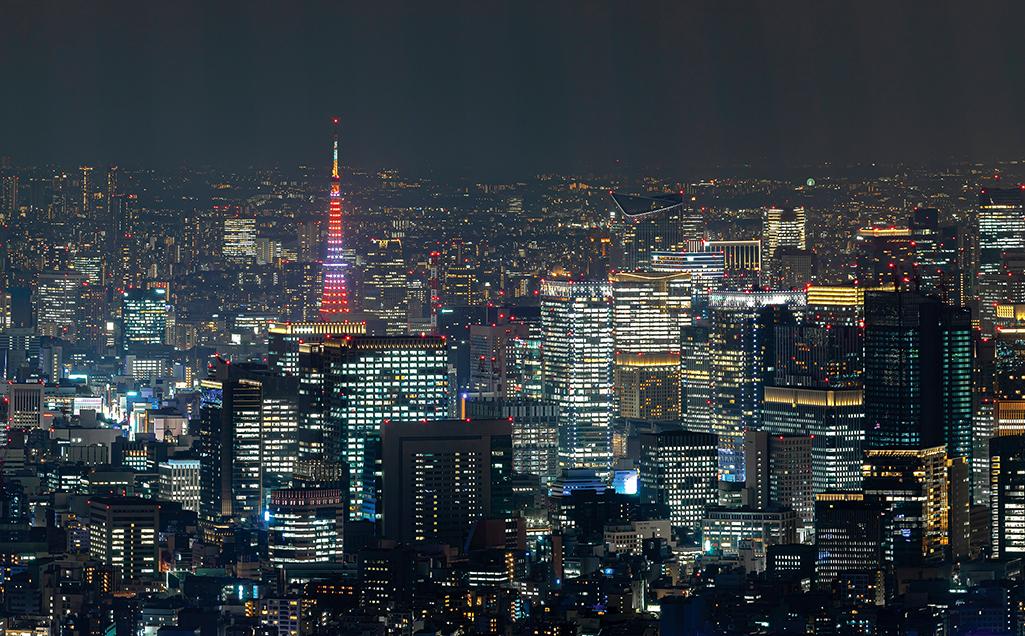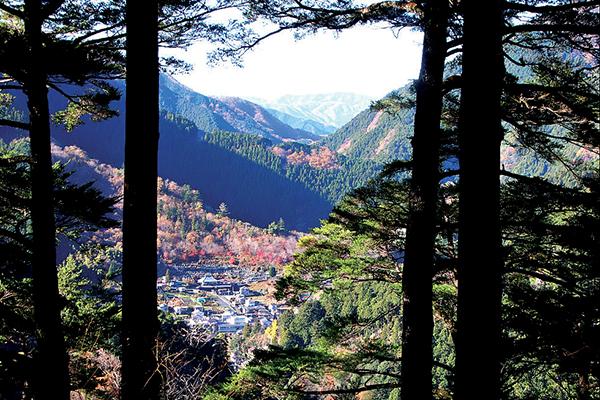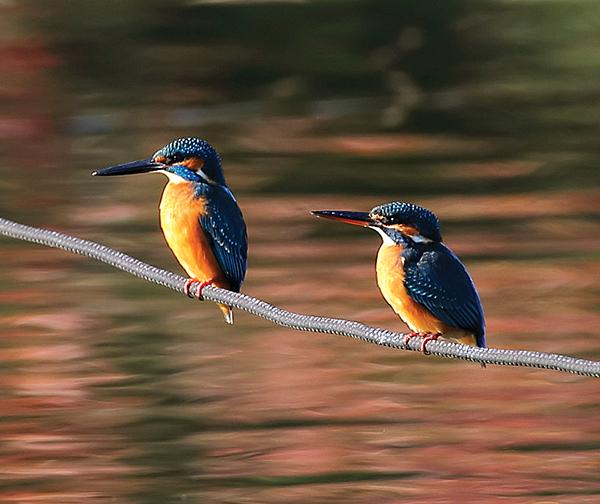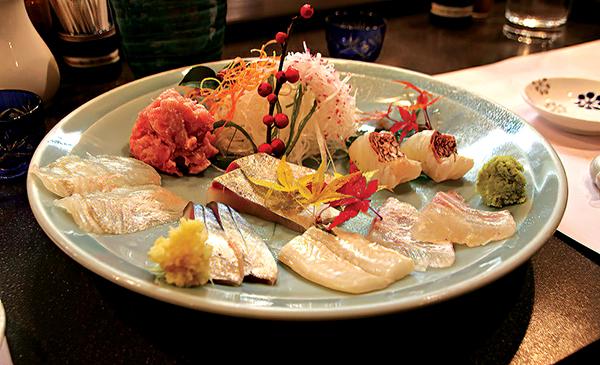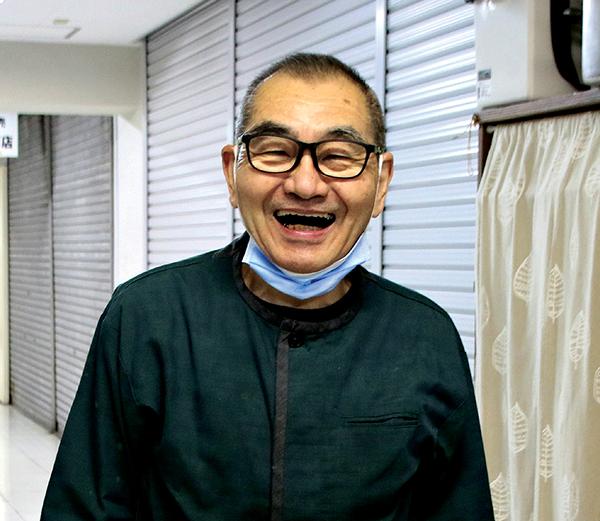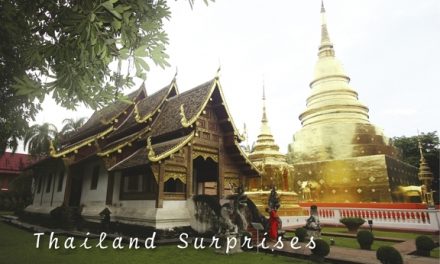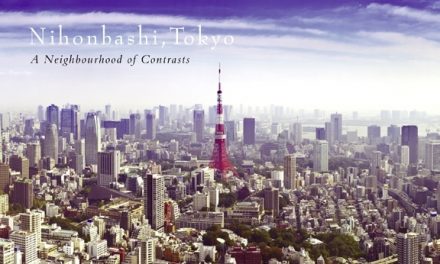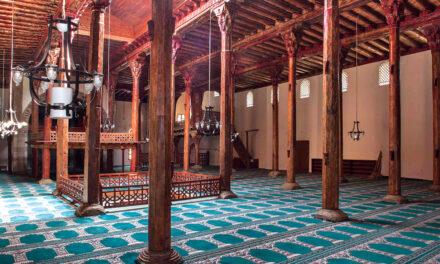Japan
The Tokyo Beat Goes on…with vitality, energy, and taste!
Article and photography by Steve Gillick
V isitors remove their shoes and socks and roll their pants to their knees before entering the ‘Soft Black Hole’. The room is dark, and the ‘floor’ is really a deep, sinking, cushiony surface. Every step is awkward as people attempt to maintain their balance. But they end up tumbling sideways, sinking up to their waist, trying to take giant steps to find solid footing, and then fall onto and into the soft, bean bag-like flooring. And this is only the introduction to Tokyo’s interactive Teamlab Planets exhibit, where the theme is “Immerse your Body, and with Others, Become One with the World”.
The sensory explosion continues to flow through a series of artworks. The kaleidoscopic ‘Water Area’ features multi-coloured Koi fish that seem to swim around visitors’ feet. The ‘Infinite Crystal Universe’ is a mesmerizing maze of beads, lights, and mirrors. The ‘Falling Universe of Flowers’ encourages visitors to float with the flower images that cascade down the walls. And ‘Transforming Space’ features giant movable spheres that turn different colours when touched.
However, Teamlab Planets is only one of Tokyo’s many innovative sensory-stimulating activities. Japan was off-limits to visitors for nearly three years due to the pandemic, but the re-opening date of October 11, 2022, was music to the ears of those who could hardly wait to resume exploring the country, specifically Tokyo. And know that Tokyo refers to both the city and the Prefecture that extends to Okutama, Tokyo’s ‘nature getaway’, about 2 hours west of the city.
Okutama conjures up thoughts of nature, wellness, and ‘shinrinyoku’, or ‘forest bathing”, where people embrace the atmosphere of the fresh air, peaceful ambiance, and the music of the trees. And Okutama is the place to be for those who enjoy a strenuous hike through the mountains, a casual stroll to visit a shrine, or a determined walk along a tree-lined path to discover a hidden rock garden. In addition, there are waterfalls, caves, lakes, suspension bridges, vistas, and even troops of Japanese Macaques.
Senzokuike Park is a little bit closer to the city of Tokyo (about 40 minutes) and provides a different experience for nature lovers seeking bright colours and birdsong. Around the lake and the nearby pond, there are colourful Eurasian Kingfishers, Feral Rose-ringed Parakeets, Long-tailed Tits, Black-faced Buntings, Warbling White-eyes, and more.
Back in the city, a sense of nature and calm can be found in many buildings designed by the architect Kengo Kuma. In October 2021, the Haruki Murakami Library opened on the campus of Waseda University. Kuma designed a soft wooden interior to encourage people to sit on the main staircase to read and reflect. And he created a wooden tunnel design on the exterior to pay homage to his love for the transformative effect of Murakami’s books on himself. (“When I start reading a novel by Haruki Murakami I get the sensation of being sucked into a tunnel…This tunnel draws you deeper and deeper until you are suddenly thrown back out into everyday life when you close the last page of the book”). And good to know that the Library was designed for die-hard Murakami fans as well as those who have never read one of his books. It’s well worth a visit!
The vitality and energy of Tokyo is best reflected in the neighbourhoods that comprise this city of 14 million. An excellent place to start is in Daikanyama, where the relaxed strolling vibe takes visitors past the shops, cafes, and galleries. At the Hillside Forum Art Gallery, we were welcomed by the fashion, textile, and nature artist Akira Minagawa to view his latest collection. A painted eagle on a jug included the declaration, “I have wings since I was born”. And a medallion featuring a pine tree and the outline of a person featured the truism, “Bird Sing Fish Swim Man Walk Live like that”.
Next door is Daikanyama Tsutaya Books, which has been referred to as one of the best bookstores in the country. Beyond the award-winning architectural design lies an impressive selection of books and music.
Another neighbourhood to discover is Shimokitazawa. This is an older area of Tokyo that has undergone gentrification. It now boasts an exciting array of used clothing stores, Asian curry shops, Craft Beer, and vinyl record shops.
And for those who love to listen to original music on vinyl from the 1960s, 70s, and 80s, take the Metro (subway) to the newly renovated Shibuya station. Instead of heading to the famous Shibuya Crossing, turn the table and head over to Record Bar 33 1/3. This small, atmospheric bar has a great sound system and a relaxed ambiance, all of which add up to a thoroughly enjoyable way to spend an evening. Shigeru Ito, the owner, keeps the memories flowing with a collection of over 3500 LPs and 2000 singles.
Visitors looking to sweeten the kitty, can take the East exit of the Shinjuku train station and listen to the loud Meow from the giant 3-D cat. Kyodai Mikeneko (giant calico cat) plays, rolls over, yawns, and stares at the crowds below. After the cat’s performance, the screen transitions into a 3-D Manga (cartoon) featuring Naruto superheroes, Gundam (giant robot) figures, and spaceships flying in and out of the billboard.
Of course, sensory fulfillment would not be complete without indulging in Tokyo’s reputation as one of the best food cities on the planet. Foodies can savour just about any type of international cuisine in every price category. Our preference is seafood, and we were overwhelmed by the creativity, freshness, and mouth-watering tastes we encountered.
Noboru Shibata is the owner of Izakaya Wasuke in Kappabashi, the neighbourhood known as the kitchenware capital of Tokyo. Even though the restaurant was packed, Noboru-san meticulously prepared our dish of assorted sashimi. First, he sliced the raw fish and artistically arranged the pieces on the platter. Then he opened a small plastic container filled with tiny Japanese Maple leaves (Momiji) that replicated the Autumn colours of red, orange, and yellow. He took his time to find the perfect colour and leaf combination before carefully positioning it on the platter. And then, adding decorative red berries, he served the ultra-fresh dish. So appealing!
And the proverbial apple doesn’t fall far from the tree. Noboru-san’s son, Hajime, owns another Izakaya Wasuke, this one located in Machiya. Again, we were treated to an evening of melt-in-the-mouth seafood. The gilled Hokke (mackerel) was as tender as butter, and Hajime’s Japanese/Asian-style Curry creation was outstanding. It was mildly spicy, emanating a comforting umami warmth that stayed with us for hours.
A few subway stops away in Kita-Senju, the line-up to get into Tokudawara, a small stand-up seafood restaurant begins at 4:00 pm. Here, chef Hirofumi Nakamura prepares unique dishes that please the eyes and charm the taste buds. The ankimo (Monkfish liver) and the marinated oysters are excellent choices.
After a three-year absence, it was a reassuring pleasure to discover that the vitality, energy, and taste of Tokyo was not only intact, but also refreshingly enhanced. This visit was the best way to celebrate and reward a love for travel.

